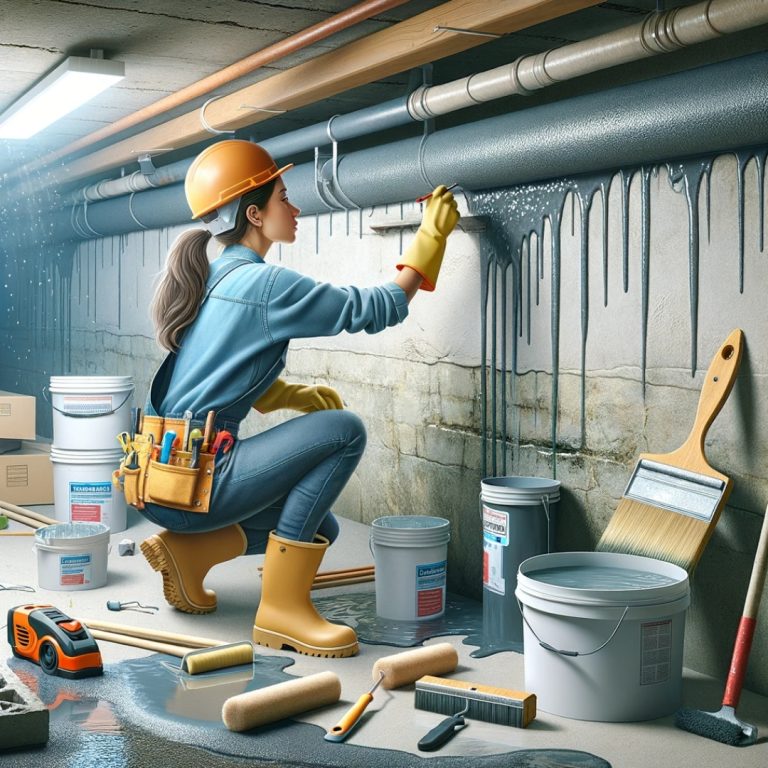A basement can be a valuable extension of your home, providing extra living or storage space. However, if left unprotected, it can also be a source of moisture and mildew problems that can damage your belongings and jeopardize the structural integrity of your house. The solution? Waterproofing basement walls. This comprehensive guide will walk you through the process, covering everything from understanding moisture issues and preparing your basement for waterproofing to implementing the most effective interior and exterior strategies. By the end, you’ll have the knowledge and confidence to transform your damp and dreary basement into a dry and functional haven.
Key Takeaways
- Understand basement moisture issues and identify signs of a wet basement.
- Implement waterproofing solutions to protect against water damage, such as plugging gaps with hydraulic cement, applying a waterproof coating, and ensuring proper drainage.
- Regular inspection is essential for maintaining dryness in the space. Call in professionals when needed.
Understanding Basement Moisture Issues
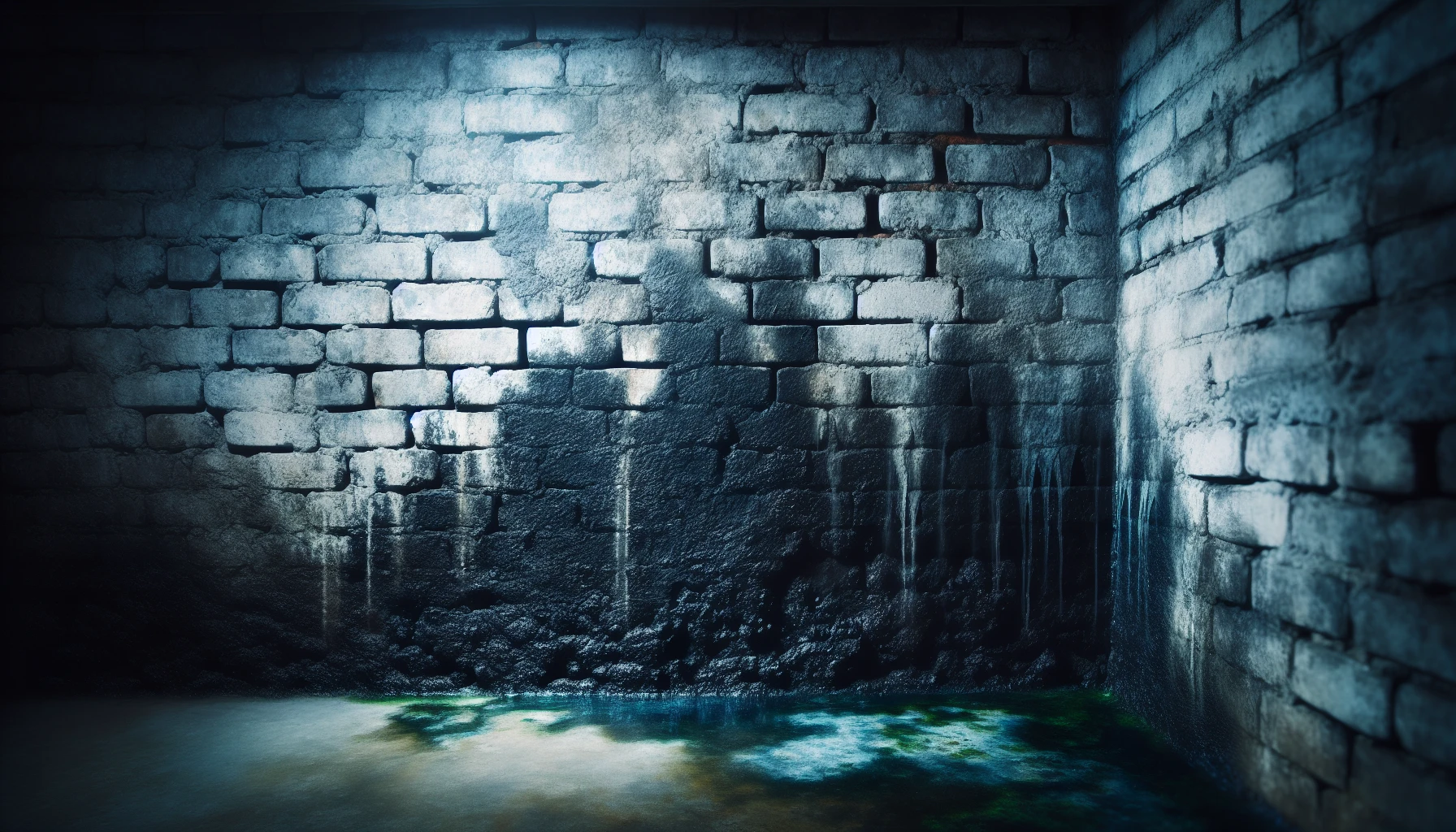
Moisture issues in basements can stem from various sources, such as rainfall, melting snow, foundation cracks, and inadequate drainage systems. A wet basement left unchecked can cause serious issues. Peeling paint, mold and mildew growth, rotted wood, and damage to stored items will all result from it..
Preventing these issues requires an understanding of the causes and effects of basement moisture and the implementation of suitable waterproofing solutions for your basement walls.
Identifying Signs of a Wet Basement
Recognizing the signs of a wet basement is the first step in addressing moisture issues. Water discoloration, musty smells, and corrosion are common indications of a damp basement. Identifying these signs helps in determining suitable waterproofing treatments for your basement walls, such as sealing cracks with hydraulic cement or using a specialized waterproofing membrane.
The Science Behind the Soak
A good grasp of the science behind basement moisture contributes to effective waterproofing. Factors contributing to basement moisture include:
- The settling of the house
- Cracks in basement walls
- Water seeping through cracks
- Water absorption from soil
Hydrostatic pressure, the force that pushes water through gaps or cracks in walls and footings, plays a significant role in basement moisture.
Capillary action, the phenomenon of water’s ability to move through porous walls, is another factor to consider. Waterproofing your basement walls is the most effective long-term solution for a wet basement.
Preparing Your Basement for Waterproofing
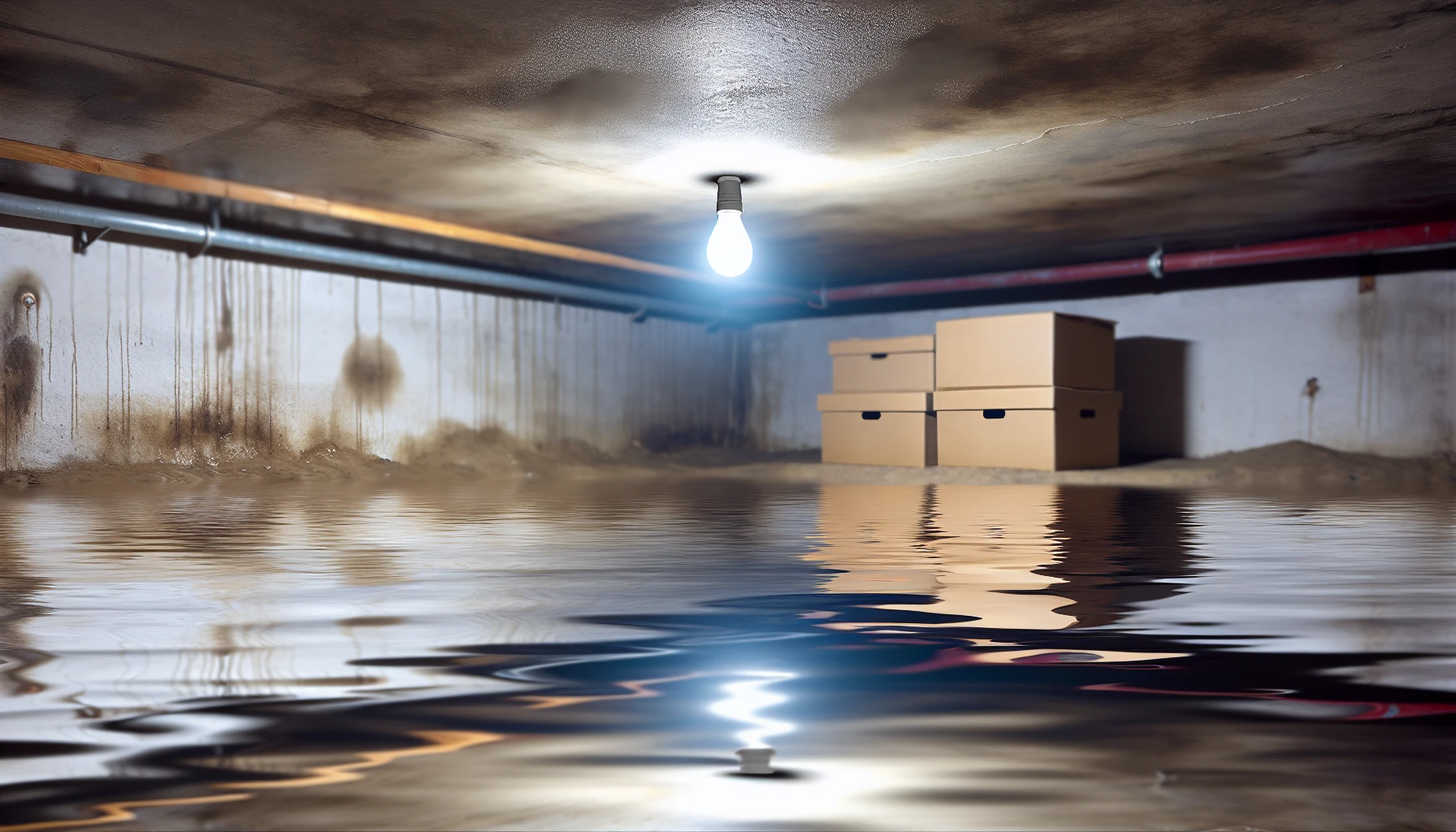
Proper space preparation is a prerequisite before starting the waterproofing process for your basement. This includes removing standing water, cleaning and stripping the walls, and addressing any existing cracks or gaps.
Proper preparation ensures that the basement waterproofing system materials adhere correctly and provide the desired result: a dry and protected basement.
Removing Standing Water
Eliminating standing water greatly contributes to a successful waterproofing result. Standing water not only makes it difficult to apply waterproofing materials but can also conceal potential issues, such as a leak originating from the floor rather than the wall.
Using tools like a wet/dry shop vacuum, a dehumidifier, or a transfer pump, you can effectively remove standing water from your basement and ensure a water-free surface before beginning the waterproofing process.
Cleaning and Stripping the Walls
Cleaning and stripping walls of old paint and efflorescence is necessary to ensure the waterproofing materials adhere properly. Here are some methods you can use:
- Use a wire brush to remove old paint from walls.
- Use a sandblaster to remove old paint from walls.
- Use DRYLOK Concrete and Masonry Liquid Etch & Cleaner to eliminate efflorescence.
- Use muriatic acid to eliminate efflorescence.
Once the walls are clean and free of old paint and efflorescence, you’ll be ready to apply the waterproofing paint.
Sealing the Deal: Interior Waterproofing Methods
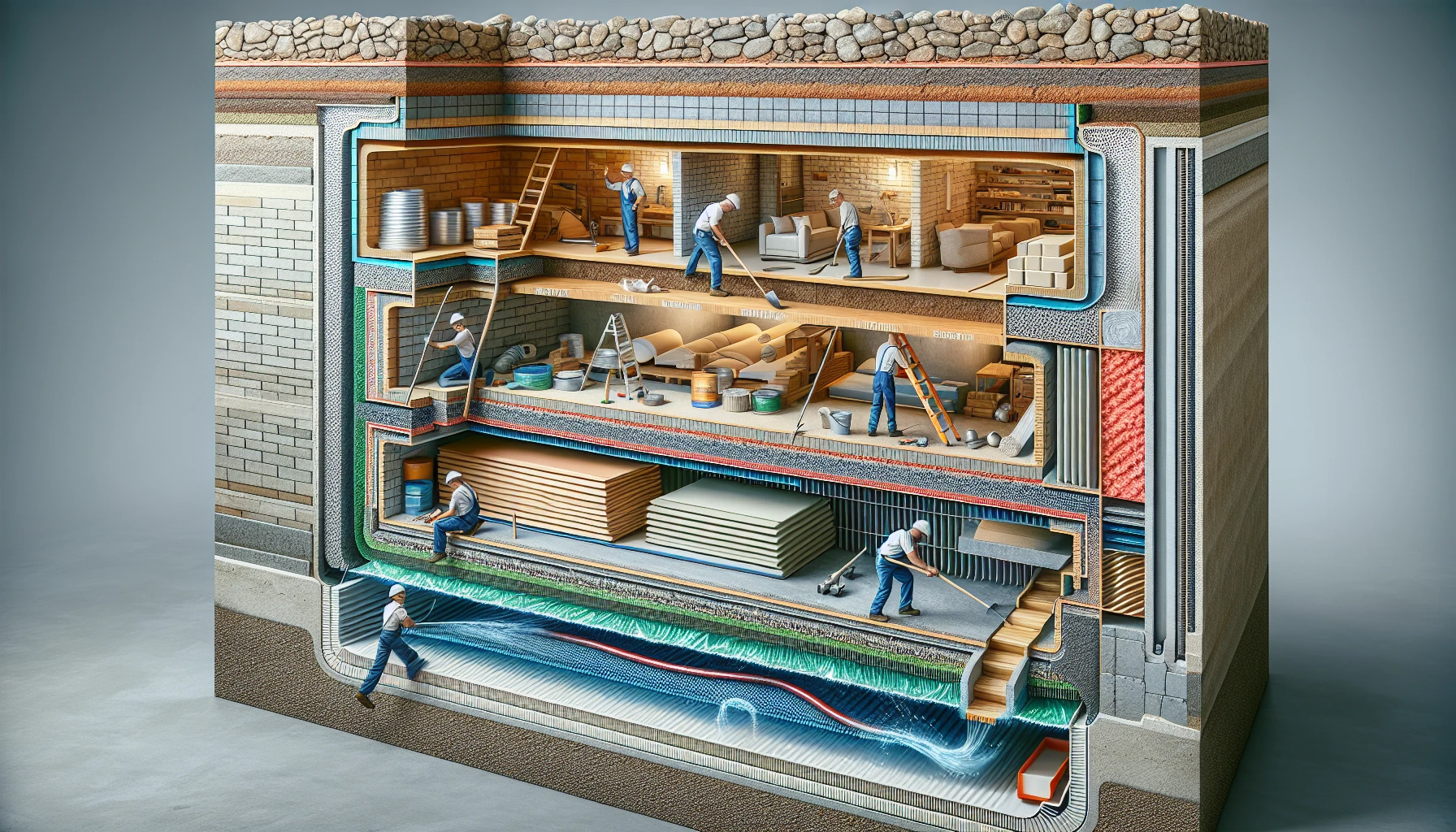
Interior waterproofing methods are effective in safeguarding your basement from water intrusion. These methods include plugging gaps with hydraulic cement, applying a waterproof coating, and ensuring proper drainage inside the basement.
Implementing these strategies helps establish a dry and secure basement environment.
Plugging Gaps with Hydraulic Cement
Hydraulic cement is an excellent material for sealing gaps and cracks in both basement walls and concrete walls. It sets quickly and is highly resistant to water, making it an ideal solution for preventing water infiltration.
When applying hydraulic cement, begin by enlarging the crack if necessary, mix the cement, and then fill in the crack. Allow the cement to cure, creating a watertight seal that protects your basement walls from moisture damage.
Applying Waterproof Coating
Creating a watertight barrier on your waterproof basement walls, especially masonry walls, can be achieved by following these steps for waterproofing basement walls, which will help you tackle wet basement walls:
- Clean the walls thoroughly.
- Repair any cracks or holes using a suitable masonry patching compound.
- Apply a waterproof coating, such as DRYLOK® Extreme Masonry Waterproofer, evenly on the entire surface.
Allow the first coat to dry completely, then apply a second coat for added protection. Adhering to these steps results in a durable waterproof barrier, keeping your basement dry and protected from moisture damage.
Ensuring Proper Drainage Inside
Maintaining proper drainage inside your basement helps prevent water accumulation and potential damage. Interior drainage solutions, such as a sump pump and interior drain systems, can effectively channel away water before it enters your basement. By installing a drainage system, you’ll protect your basement from water damage and maintain a dry, comfortable living space.
Exterior Waterproofing: Your First Line of Defense
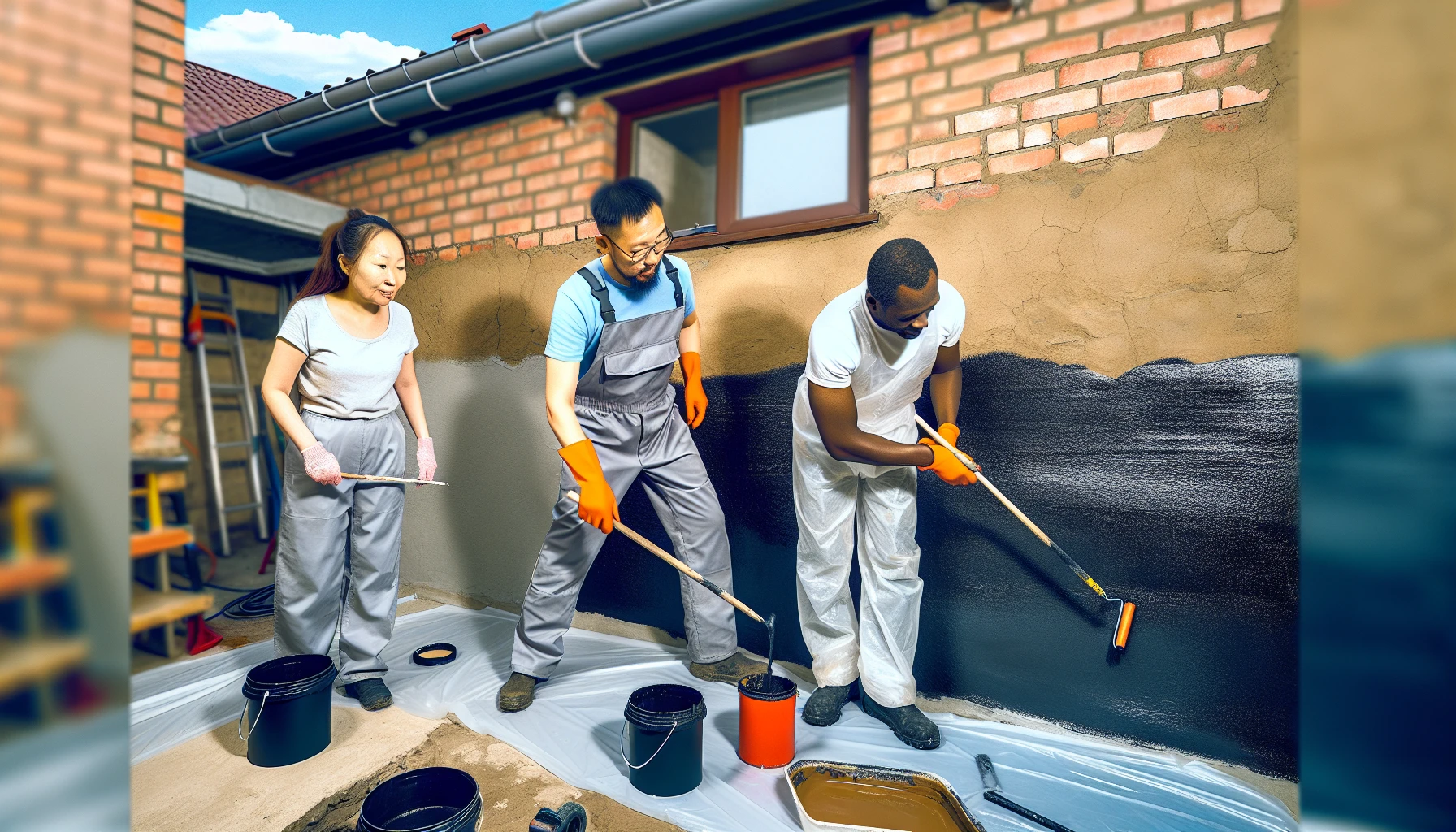
Exterior waterproofing serves as a key initial defense against basement moisture. By creating an external barrier and improving ground slope and drainage, you can prevent water from entering your basement and causing damage.
Investing in exterior waterproofing not only protects your basement but also helps maintain the overall structural integrity of your home.
Improving Ground Slope and Drainage
Improving the ground slope and drainage to steer water away from your home’s foundation is important. Ensure a downward slope of at least one inch per foot, sustained for a minimum of 10 feet beyond the foundation. By creating an effective ground slope, you’ll redirect water away from your home, preventing basement moisture issues and protecting your home’s foundation.
Creating an External Barrier
An external barrier helps protect your basement from water intrusion by sealing the exterior surfaces of your basement walls. This barrier can be a waterproofing membrane or coating that prevents moisture and water from seeping through the walls.
To create an external barrier, follow these steps:
- Excavate the area around the basement wall down to the footings.
- Clean the wall surface.
- Apply a waterproofing membrane or coating.
- Backfill the excavated area with appropriate drain fill to ensure proper drainage away from the wall.
Creating an external barrier guarantees a dry and secure basement.
Special Considerations for Unique Spaces
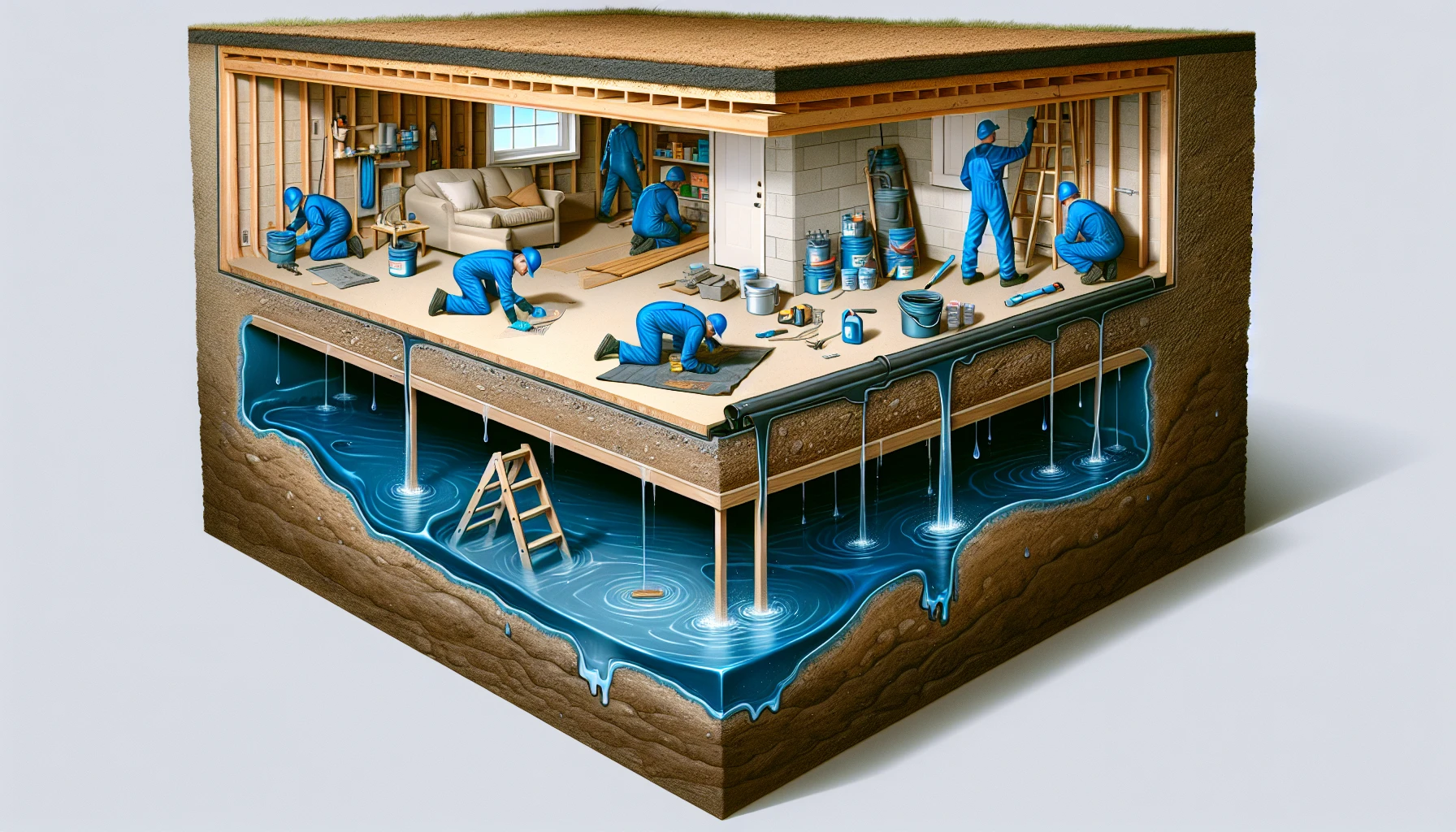
Unique spaces, such as crawl spaces and high humidity areas, present their own set of challenges when it comes to waterproofing. Addressing moisture infiltration, drainage issues, and ventilation concerns in these situations is key to ensuring a dry and secure space.
Crawl Space Conundrums
Preventing moisture-related issues like mold and mildew growth necessitates waterproofing crawl spaces. By sealing both the interior and exterior walls of the basement crawl space, as well as any crawl spaces that may be susceptible to water seepage, you can create a dry and protected environment.
Implementing waterproofing measures like installing a vapor barrier, digging a trench along the perimeter, and applying cement waterproofing can effectively protect your crawl space from moisture damage.
Handling High Humidity Areas
To maintain a comfortable and healthy living space, managing humidity in your basement is necessary. In high humidity areas, common moisture-related issues include condensation on walls and floors, damp air leading to mold odors, and inadequate drainage or ventilation. Utilizing a dehumidifier can help control humidity levels and prevent these issues.
Additionally, opening windows, using fans for air circulation, and strategically placing moisture-absorbing plants can also help maintain ideal humidity levels in your basement.
When to Call in the Pros: Seeking Expert Help
Although homeowners can handle some basement waterproofing tasks, there are instances when professional assistance is required. Recognizing when a project is too overwhelming to handle on your own and choosing a reliable basement waterproofing company can ensure a successful outcome and maintain the integrity of your home.
Recognizing Overwhelming Projects
Recognizing when a basement moisture issue is beyond your capacity to handle is important. Signs of serious water damage include mold or mildew growth, foundation cracks, and standing water.
In these situations, seeking professional help is recommended to properly address the issue and ensure the structural integrity of your basement.
Choosing a Reliable Basement Waterproofing Company
Choosing a trustworthy basement waterproofing company is key for the success of your project. Look for a company with:
- Certifications from esteemed organizations
- A legitimate license
- Considerable experience
- Positive references and reviews
Opting for a reputable company guarantees an effective and efficient completion of your basement waterproofing project, resulting in a dry and secure living space.
Enhancing Basement Use Post-Waterproofing
Once your basement is waterproofed, it’s time to make the most of your newly dry and functional space. From reimagining the layout and design to maintaining the ideal humidity levels, there are plenty of ways to enhance your basement and transform it into a comfortable and enjoyable living area.
Reimagining Your Space
With your newly waterproofed basement, consider reimagining the space for improved functionality and aesthetics. Here are some ideas:
- Construct a library
- Establish a basement bar
- Incorporate a sauna
- Create a home theater
- Set up a workout or yoga space
The possibilities are endless, and with proper waterproofing and maintenance, you can enjoy your basement floor as an extension of your home for years to come.
Maintaining Your Dry Haven
Keeping your basement dry and secure necessitates regular maintenance. Inspect your basement periodically for signs of moisture, such as mold growth, water stains, and efflorescence, and address any issues promptly to prevent further damage.
Maintaining your dry haven with vigilance and proactivity guarantees a healthy and comfortable basement environment for the long term.
Summary
In conclusion, waterproofing your basement walls is an essential step in protecting your home from moisture-related issues and maintaining a dry, comfortable living space. By understanding the causes and effects of basement moisture, preparing your basement for waterproofing, and implementing effective interior and exterior waterproofing methods, you can transform your damp basement into a functional and enjoyable area. Don’t let moisture hold you back; take control of your basement’s future and enjoy the benefits of a dry and protected space.
Frequently Asked Questions
What is the most effective way to waterproof a basement?
For maximum effectiveness, negative-side waterproofing membranes should be used to waterproof the basement from the inside, followed by epoxy or polyurethane for severe cases. Cementitious materials can also provide good protection while saving money.
Can I waterproof my basement myself?
With the right skills, expertise, and time commitment, you can waterproof your basement yourself. However, it may take longer to complete the job than hiring a professional.
Is basement waterproofing worth it?
Basement waterproofing is worth it, with studies showing over 98% of all basements experiencing some kind of water damage and the potential for costly repairs. It’s a great selling point for potential buyers with an estimated return on investment of around 30%.
How do you fix a wet basement from the inside?
To fix a wet basement from the inside, install a drainage system with tubing below the floor, plug gaps and cracks around plumbing pipes, ensure proper landscape grading, maintain gutters and downspouts, and install a sump pump and dehumidifier. For permanent solutions, a hidden interior drain such as Basement Systems’ WaterGuard® can capture water before it reaches the basement floor.
What are the primary causes of a wet basement?
The primary causes of a wet basement are condensation, runoff, and subsurface seepage.
